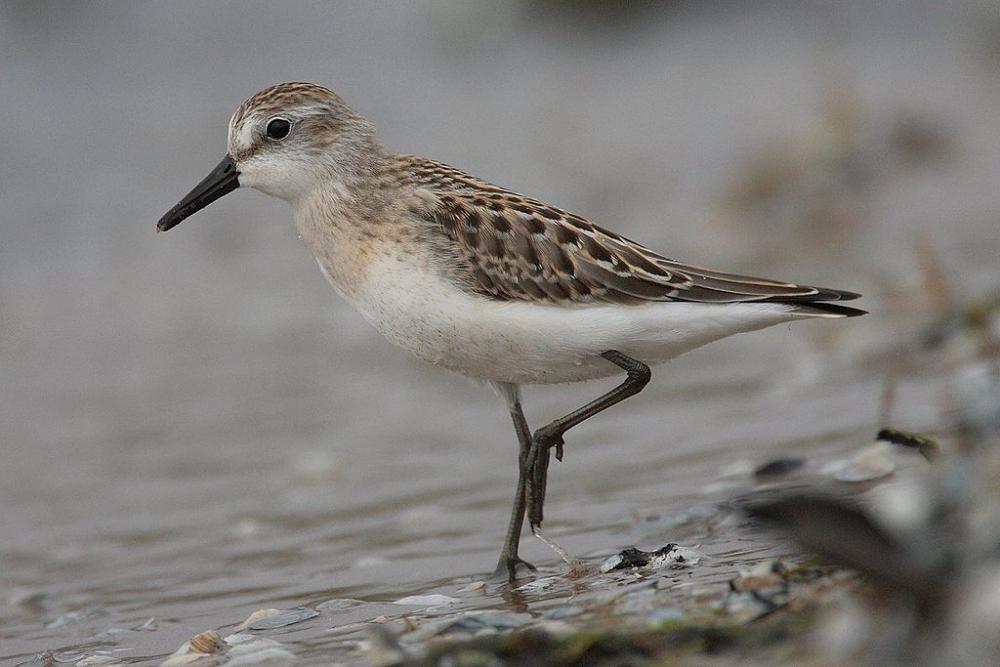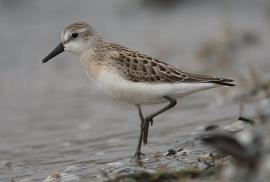Guide to Boreal Birds
Overview
These small sandpipers are perhaps the most numerous shorebirds in North America, sometimes occurring by the thousands during migration. Often they are found on mudflats feeding together with their close relatives, the Least and Western sandpipers. The word "Semipalmated," referring to the birds' toes, means "half-webbed." Actually the toes are only slightly lobed at their bases, but they do help the birds to walk on mud without sinking.
Description
5 1/2-6 3/4" (14-17 cm). Slightly larger than a Least Sandpiper. In all plumages, grayer above with less-streaked breast than other "peeps." Feet black. Bill black and short, drooping slightly at tip; noticeably stouter than bill of Least Sandpiper.
Voice
A sharp cheh or churk, not as drawn out as the notes of the Least and Western sandpipers.
Nesting
4 buff eggs, marked with brown, in a depression on the ground.
Habitat
Breeds on tundra; winters on and migrates along coastal beaches, lake and river shores, mudflats, and pools in salt marshes.
Range/Migration
Breeds in northern Alaska and Canada south to Hudson Bay. Migrates commonly through eastern and central states, rarely but regularly in West. Winters in South America.



